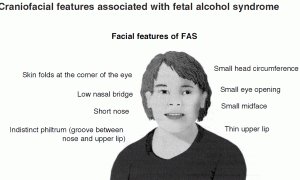
There are several variations concerning lies, myths and truths. In fact, there are half lies, half truths and then myths. Food industries don’t always tell consumers the entire truth about their products, because they don’t want to suffer a loss to their profits, or perhaps they don’t want to disappoint their customers.
In any case, consumers should know what they are buying, and most importantly, what they are eating. We have all heard that white bread is bad for you and wheat bread is better. Here are a few simple myths and truths about white bread, wheat bread and rye bread.
Are breads Good or Bad?
Myth
White bread it is bad for you.
Truth
Many people believe this myth, and even today they refuse to eat any type of bread, whether it is white or wheat. Bread contains fiber, carbohydrates, minerals, iron, folic acid and fiber. These are all the nutrients the body needs to function properly and stay healthy.
Bread is good for the body, if it is eaten in moderation. However, some people cannot stop at a slice or two. When most people are hungry, they reach for a sandwich, a roll, a snack cake or a sandwich. The more bread people eat, the more they tend to want.
Myth
Breads made with enriched flour are filled with nutrients.
Truth
Enriched flour is not all it’s claimed to be. The two most important ingredients missing from this recipe are germ and bran. The nutrients are actually stripped out of the flour, and sprinkled back in. Moreover, the nutrients lost in the stripping process cannot be fully reclaimed.
Myth
Healthy breads are known by their names.
Truth
This simply isn’t true. Many foods, including breads, have great, healthy-sounding names. However, the ingredients they contain are far from healthy. Names are deceiving, and in most cases misleading. Names are meant to sell foods, services and products, and unfortunately, many foods do not live up to their names, and breads are no exception.
Myth
All breads contain gluten and must be eliminated from a diet.
Truth
The majority, but not all breads, are loaded with gluten. In fact, wheat bread contains high quantities of gluten, while other breads do not contain high volumes of gluten at all. Unless the bread is baked at home, the possibility of choosing a gluten-filled bread exists.
Myth
Rye bread is made from 100% wheat and is high in fiber.
Truth
Most rye bread contains only one gram of fiber in each serving. Unbleached, stripped down flour, water and rye flour are the main ingredients found in rye bread. Rye bread is not as healthy as it makes itself out to be.
Myth
Breads should be kept in the refrigerator to keep from getting stale.
Truth
Breads actually have a longer shelf life if they are not exposed to elements inside the refrigerator. Breads absorb the taste and smell of other foods. Keeping breads in cool dry places, such as a bread box, can help keep breads from getting moldy and stale.
Myth
Eating large volumes of wheat breads does not add on the pounds.
Truth
Eating whole grain breads is healthier. However, eating large amounts of whole wheat breads can increase the pounds. Eating the daily recommended allowance found in whole grain breads can provide essential vitamins, minerals and fibers the body needs.
Bread Facts
Whole grain breads contain whole grain kernels. Inside the kernel are the endosperm and the germ. Whole wheat breads contain fiber, molasses, mineral and reduced cholesterol. It’s difficult to identify brown breads simply by their color.
Wheat breads, such as honey wheat and multigrain, may contain some wheat grain, but they lack the whole wheat grain. Breads marked 100% whole wheat are often packaged with whole rye, oats or whole wheat flour, are the most nutritious breads to buy.
Here are some other important bread facts to know:
1) One slice of store-bought bread has approximately 69 calories. 8 of these calories derive from fat, 12 grams of carbohydrates, 132 mg of sodium and 4 grams of protein.
2) Whole wheat breads are low cholesterol, low fat alternative breads.
3) One slice contains 1 gram of fat, and no trans or saturated fat is included.
4) Whole wheat breads are used in diet management.
5) Commercially prepared breads (white breads) contain more sodium than wheat bread.
6) Commercially prepared breads contain more calories, and more total carbohydrates than wheat bread.
100 percent wheat bread is the healthier bread to choose. Stay away from commercially prepared breads and eat the recommended daily grain allowance, according to the food pyramid.
What’s your favorite type of bread? What other bread myths do you know? What’s the truth behind them?




Leave a comment
You must login or register to add a new comment.